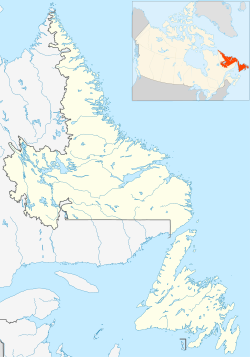Economy
Wabush is the twin community of Labrador City. [3] At its peak population in the late 1970s, the region had a population of just over 22,000. A reduction in iron mining operations in the late 20th century caused a major decline in jobs and population, when Cliffs Natural Resources Canada had to close and cold store the Scully Mine property (Wabush mines). Since 2018, Tacora Resources Inc. took over and has successfully restarted the Scully property, slowly reinvigorating the community and investing back into the property.
As of 2021, Wabush's population was 1,964. [2] Most residents work in the nearby mines of the Iron Ore Company of Canada, now a unit of Rio Tinto Mines and the Scully Mine of Tacora Resources Inc.
Companies in and around Wabush include:
- Tacora Resources (owner of former Wabush Mines site)
While remote, the town contains modern amenities. A shopping centre includes a post office, bank, a restaurant, a bar, and a snowmobile store. There is also a recreational centre which includes a bowling alley, gymnasium, swimming pool, a teen centre, a weight lifting room, an ice arena, a library, a legion building that serves alcoholic beverages, a furniture store, several playgrounds, a school, a church, two corner stores, and a hotel (which also includes a restaurant, a barber shop, and a bar).
This page is based on this
Wikipedia article Text is available under the
CC BY-SA 4.0 license; additional terms may apply.
Images, videos and audio are available under their respective licenses.




